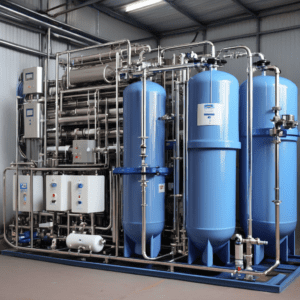Iron Removal & Softener Plants
Iron contamination in water poses significant challenges, manifesting in unpleasant tastes, metallic odors, and unsightly staining. These issues render water unfit for domestic usage and industrial applications alike. To mitigate these problems, iron removal filters are indispensable.
For domestic and light-scale applications, portable iron removal filters suffice. Conversely, larger iron removal plants are imperative for commercial and industrial settings. The iron removal process entails oxidation filtration, wherein dissolved iron and manganese undergo oxidation to their residual forms, subsequently being filtered out.
Maintaining iron concentrations within specified thresholds is paramount for water quality. For municipal or household use, iron levels should ideally not surpass 0.3 parts per million (ppm). Exceeding 0.2 to 0.3 milligrams per liter (mg/L) of iron can lead to operational issues in various water applications.
To summarize, iron presence in water triggers taste, odor, and aesthetic concerns, necessitating the deployment of iron removal filters and adherence to recommended concentration limits. These measures are crucial for safeguarding water quality across domestic and industrial sectors.





